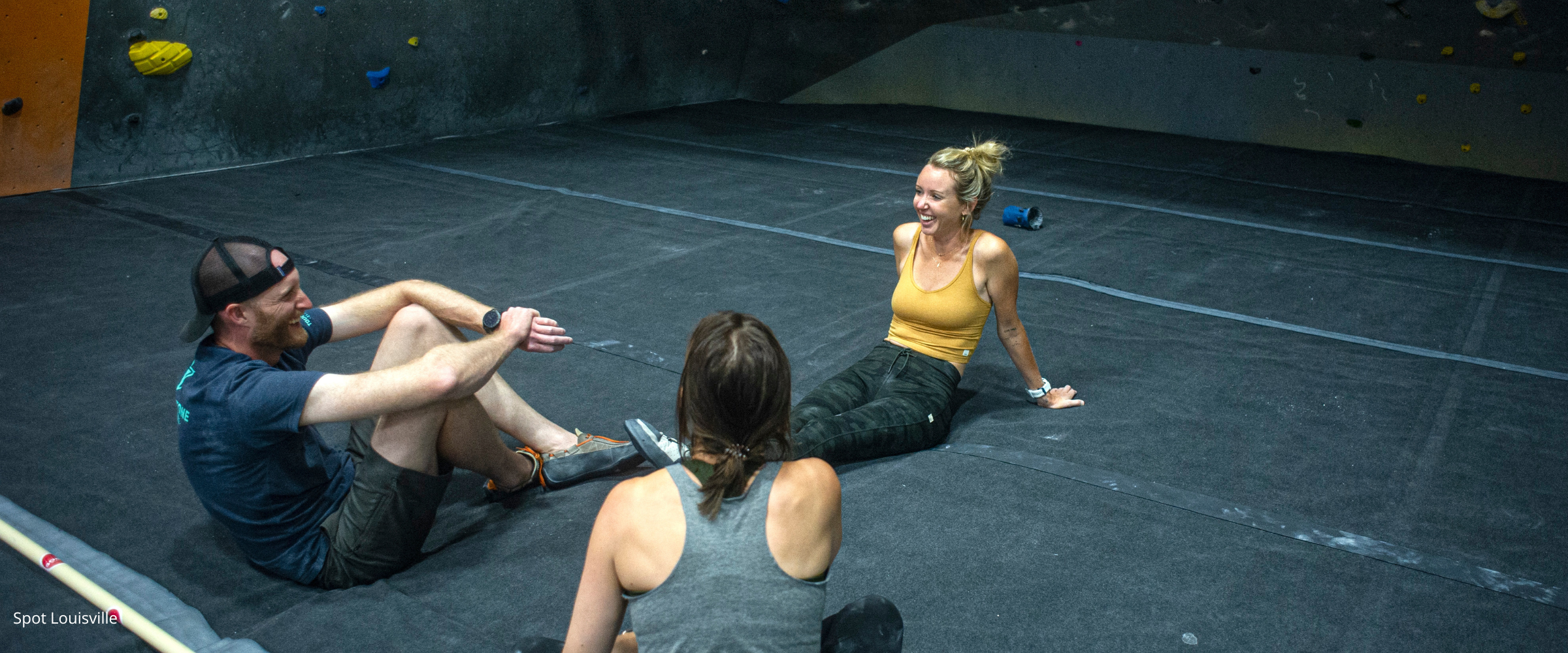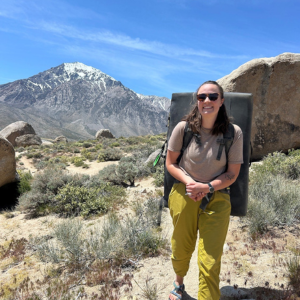Pay What You Can in Indoor Climbing Gyms: Why It Works

This article is sponsored content written by CWA staff.
The American Alpine Club has recently released its groundbreaking Pay What You Can (PWYC) Toolkit for indoor climbing gyms. At the CWA, we were ecstatic to see this important work being done and to see so much of our membership help out. Let's pause for just a moment, though, and put it in perspective.
Recently, I was asked directly why indoor climbing is growing so much. There are a lot of reasons, but my favorite is that it's more accessible than it has ever been. Accessible at first glance just means more indoor climbing gyms in general. And this is true, more open than close every year, and since the pandemic, we have an indoor climbing gym in every state in the U.S.
But accessibility also means that more people can go to those gyms. We're living through quite a moment in U.S. history. Sticker shock is real, which means more people are having difficulty justifying non-essential expenses. My climbing gym membership is essential to me and my mental and physical health, but I'm not sure everyone who walks through your doors feels the same.
This gets us to my point about the answer to that question. More business owners are getting creative with membership models to allow more people, no matter their financial constraints, to take advantage of their services. And the best part, as the American Alpine Club will point out, is that it's not only possible for you and your gym, but it can be a good decision for your bottom line.
"A Pay What You Can (PWYC) Model is both financially viable and easy to implement," says Nick Ridley, the Education Director of the American Alpine Club. That's the primary takeaway he wants indoor climbing gym operators to understand. This can be implemented for gyms of any size, and with appropriate start-up resources, will help your community and the program itself can generate revenue.
The AAC began their work on a PWYC Model Toolkit out of their work on equity. "We have to recognize that most climbers are introduced to climbing in an indoor setting," he said. Though the American Alpine Club is mostly known for its work on outdoor climbing, this was the project's inception.
Will I Lose Money?
In short, almost certainly not. The data collected through research on this toolkit backs up this fact. There are many reasons for this, and we won't be pulling all the data out of the toolkit (you should download it and read it!), but the following is telling:
"Of the 47 gyms we spoke to as part of this study, the vast majority had net positive effects on their revenue, although not substantial streams of growth revenue,"
PWYC Toolkit, page 19.
To sum it up, it's really for two basic reasons.
By opening your doors wider to people in need, you suddenly have an untapped membership group you didn't know was there. People don't stay in the program forever, and this means that you have someone in your gym's ecosystem who wouldn't have been there before, and who you just helped out. The toolkit cites negligible financial impacts from instances of people taking advantage of the program, and even those can be mitigated up to a point.
The second is by recapture. Someone is going to cancel their gym membership due to financial insecurity, and through this program, you can keep their membership alive at a discounted rate. There are many structures of a PWYC Model, as the toolkit outlines, but they can take multiple forms to maintain financial viability.
"These programs are financially viable because they're totally tailor-able to each individual climbing gym," says Margo Keevil, Director of Community and the Director of Human Resources for Boulders Climbing Gym. A country-wide Pay What You Can Model program is nested in their gym, called Climb4Community.
 |
|
Margo Keevil, Boulders Climbing Gym. |
There are infinite modifications to the program to meet the financial needs of your facility. From limiting the duration and quantity of applicants to setting caps on the minimum payments, there are many solutions in the toolkit to be explored.
What Does Success Look Like?
For a Pay What You Can Model to be successful, a gym operator has to answer this question for themselves. The PWYC Toolkit identifies a lack of clear goal setting as a major challenge to a successful program (page 20). In our view, though, success is:
- Opening your doors to more of your community, and spreading indoor climbing beyond financial barriers
- Accomplishing this first goal without harming your bottom line
A potential hurdle for your membership will be how they interact with their understanding of their own need. "[A PWYC] membership has to look the same," says Nick. And it makes sense. We don't want to 'other' people due to their financial situation.
According to Nick and the ACC findings, successful programs look identical to regular gym memberships. They also treat participants with "emotional respect and dignity." A main strategy for this is by using an honor system as an opt-in / opt-out. Most gyms do it this way, according to the report, and still don't experience any statistically significant instances of people taking advantage.
We Do Better When We All Do Better
"Every day I receive applications from folks who wouldn't otherwise be able to access our space, or who have tried other methods of joining the gym and have hit a breaking point," says Margo.
Indoor climbing stakeholders often reference community as a main focus of their membership structure and of a strategy for success. The concept of community does not stop at the doors of your facility, nor does it operate independently of financial need. This goes both to the climbing gym operator, no financial success means no gym, but it can also extend to those in the community and in need.
"Stories of single parents with multiple kids who love climbing, folks with limited economic support, people seeking kind and supportive community, folks with disabilities, veterans, people who are un or under-employed, nurses, teachers, full-time parents, long-time members who have lost their job, and loads of others let us know how Climb4Community [PWYC] has allowed them, on a purely financial basis, access to the gym."
Download the Report
The American Alpine Club's Pay What You Can Toolkit is a free resource that the CWA is proud to promote and endorse. By making indoor climbing more accessible to everyone, and not just those who can afford it at this moment, we further our mission.
